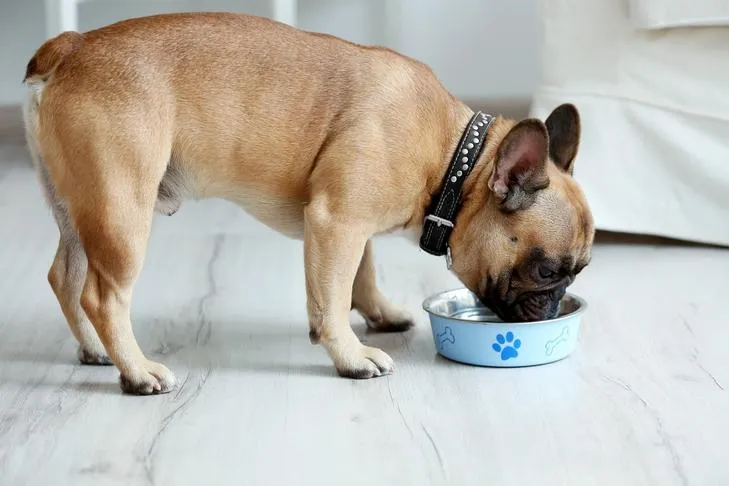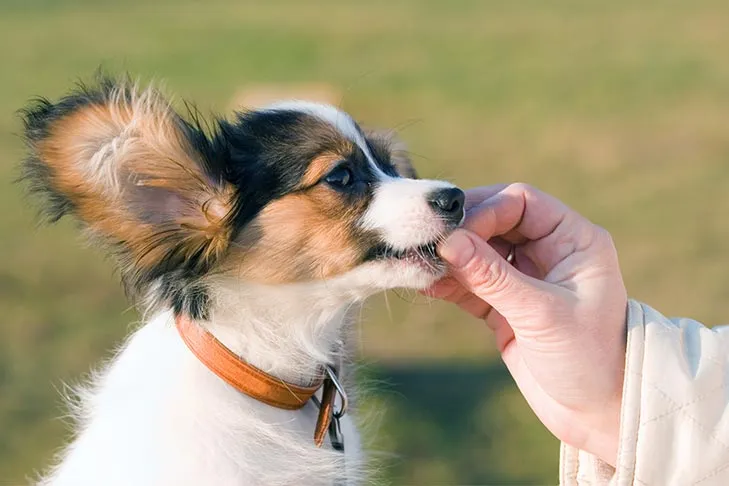Sharing food with our beloved canine companions is a common desire for many pet owners. As dogs become integral members of our families, it’s natural to wonder which human foods are safe for them to consume and which are strictly off-limits. Navigating the world of canine nutrition can be complex, as what might be a healthy snack for humans could be toxic for dogs. Understanding the nuanced differences is crucial for ensuring your pet’s health and well-being. This comprehensive guide will help you decipher What Can Dogs Have And Not Have, providing essential information on safe human foods, moderation guidelines, and crucial warnings about dangerous items, ensuring your furry friend enjoys a balanced and healthy life. For a broader understanding of what human foods your dog can and cannot eat, you can explore further details on can dogs eat what humans eat.
Safe Human Foods Dogs Can Enjoy
While a dog’s primary diet should always come from high-quality commercial dog food, certain human foods, when prepared correctly and offered in moderation, can serve as healthy and enjoyable treats. These additions can provide extra nutrients and variety, but always remember that they should not replace their balanced dog food. Here’s a list of generally safe human foods for your dog:
Bread
Small quantities of plain bread are generally harmless for your dog, provided it contains no spices, particularly no raisins, which are highly toxic. However, bread offers minimal nutritional benefit, being primarily carbohydrates and calories, similar to its effect on humans. While homemade bread might be a slightly better option than store-bought varieties that often include unnecessary preservatives, it’s best to offer it sparingly as it contributes to calorie intake without significant health advantages.
Cashews
Cashews can be a fine treat for dogs, but only in very limited amounts. They offer beneficial nutrients like calcium, magnesium, antioxidants, and protein. Despite being lower in fat compared to other nuts, excessive consumption can still lead to weight gain. Ensure cashews are unsalted, as too much sodium is detrimental to canine health. A few cashews can make a pleasant, occasional reward.
Cheese
Dogs can typically eat cheese in small to moderate quantities. Unless your dog exhibits signs of lactose intolerance (a rare but possible condition), cheese can be a highly motivating treat. Due to its often high-fat content, opt for lower-fat cheeses such as cottage cheese or mozzarella. Many dogs also enjoy specialized, dog-friendly dried cheese chews, like Himalayan dog chews, designed for safe consumption.
 All American Dog resting its head on the kitchen table looking at cheese, a safe human food for dogs.
All American Dog resting its head on the kitchen table looking at cheese, a safe human food for dogs.
Coconut
This distinctive fruit contains lauric acid, known for its potential to combat bacteria and viruses. Coconut may also help in alleviating bad breath and improving skin conditions such as hot spots, flea allergies, and general itchy skin. Both coconut milk and coconut oil are safe for dogs. A crucial precaution is to ensure the fibrous outer shell is removed entirely, as it poses a choking hazard or can cause intestinal blockages.
Corn
Corn is a ubiquitous ingredient in many commercial dog foods, attesting to its general safety for canine consumption. However, the corn cob itself is indigestible for dogs and can lead to severe intestinal blockage. If you’re sharing corn, always ensure it is removed from the cob. For playful pups, a squeaky corn-shaped toy might be a safer and equally entertaining alternative.
Eggs
Fully cooked eggs are a fantastic and safe source of protein for dogs. They can be particularly soothing for an upset stomach. It’s imperative that eggs are cooked thoroughly, as raw egg whites contain avidin, which can interfere with biotin absorption and potentially lead to a biotin deficiency over time. Scrambled or boiled eggs, without added seasonings, are ideal.
Fish
Fish is rich in beneficial fats and amino acids, offering a significant health boost to your dog. Salmon and sardines are particularly advantageous. Salmon provides an abundance of vitamins and protein, while sardines offer readily digestible bones, supplying extra calcium. For all fish except sardines, meticulous removal of all tiny bones is essential to prevent choking or internal injury. Never feed your dog uncooked or undercooked fish due to the risk of parasites. Only serve fully cooked and cooled fish, limiting intake to no more than twice a week.
Ham
While ham is generally safe for dogs, it’s not the healthiest option due to its high sodium and fat content. Offering a small, occasional piece as a treat is acceptable, but it should not become a regular part of their diet. Excessive consumption of ham can contribute to health issues such as pancreatitis or obesity.
 French Bulldog happily eating from a bowl, showcasing what dogs can have in their diet.
French Bulldog happily eating from a bowl, showcasing what dogs can have in their diet.
Honey
Honey is a treasure trove of nutrients, including vitamin A, potassium, calcium, magnesium, copper, and potent antioxidants. Giving dogs small amounts of local honey may help alleviate seasonal allergies by gradually introducing small amounts of pollen, thereby building immunity. Beyond consumption, the sticky substance can also be applied topically to minor burns and superficial cuts for its natural antiseptic properties.
Milk
Dogs can drink milk, but caution is advised. Some dogs are lactose intolerant and may experience digestive upset, such as diarrhea, after consuming dairy products. While a small amount of milk is unlikely to cause severe issues, owners should be mindful of lactose intolerance symptoms and might consider sticking to water as the primary beverage for their pets.
Peanut Butter
Peanut butter can be an excellent source of protein for dogs, packed with heart-healthy fats, vitamins B and E, and niacin. The healthiest choice is raw, unsalted peanut butter. Always meticulously check the label to ensure the product does not contain xylitol, a common artificial sweetener that is highly toxic and potentially fatal to dogs, even in small amounts. For more specific information on suitable options, discover what human peanut butter is safe for dogs.
Peanuts
Unlike almonds, plain peanuts are safe for dogs to eat. They are rich in beneficial fats and proteins that can contribute positively to your dog’s diet. However, moderation is key to prevent excessive fat intake, which can lead to pancreatic problems. Crucially, always avoid salted peanuts, as high sodium levels are difficult for a dog’s system to process.
Popcorn
Unsalted, unbuttered, and air-popped popcorn is acceptable for your dog in moderation. It contains riboflavin and thiamine, which support eye health and digestion, along with trace amounts of iron and protein. Ensure all kernels are fully popped before offering them to your dog, as unpopped kernels can pose a choking hazard or cause digestive issues.
Pork
Pork is a highly digestible protein source, abundant in amino acids, although it typically contains more calories per pound than other meats. For some pets, it may be less likely to trigger an allergic reaction compared to other protein sources. Ensure pork is thoroughly cooked, unseasoned, and all bones are removed before offering it to your dog. For a detailed list of suitable foods, understanding what is okay to feed dogs can guide your choices.
Quinoa
Quinoa is increasingly found in high-quality dry dog foods, highlighting its nutritional benefits. Its robust nutritional profile makes it a healthy and grain-inclusive alternative to more common starches like corn, wheat, and soy, which are often used in kibble. Quinoa provides essential amino acids, fiber, and various minerals.
 Healthy Samoyed puppy laying outdoors in the grass, thriving on a well-managed diet of what dogs can have.
Healthy Samoyed puppy laying outdoors in the grass, thriving on a well-managed diet of what dogs can have.
Salmon
As previously mentioned, fully cooked salmon is an outstanding source of protein, healthy fats (especially omega-3 fatty acids), and amino acids. These components significantly boost joint and brain health and strengthen a dog’s immune system. However, raw or undercooked salmon harbors parasites that can cause severe illness, leading to symptoms like vomiting, diarrhea, and dehydration, and in extreme cases, even death. Always ensure salmon is cooked completely to eliminate these dangerous parasites.
Shrimp
A few shrimp offered occasionally are fine for your dog, but only if they are fully cooked and completely shelled, including the removal of the tail, head, and legs. Shrimp are rich in antioxidants, vitamin B-12, and phosphorus, while being low in fat, calories, and carbohydrates, making them a relatively healthy treat in moderation.
Tuna
Dogs can consume tuna, but only in very small amounts. In moderation, cooked, fresh tuna provides an excellent source of omega-3 fatty acids, which are beneficial for heart and eye health. Canned tuna, however, can contain small amounts of mercury and higher levels of sodium, which should be avoided in excess. A little bit of canned tuna (packed in water, not oil, and without any added spices) and its juice now and then is generally considered safe.
Turkey
Cooked turkey is safe for dogs, but it’s crucial to remove all excess fat and skin from the meat. Additionally, thoroughly check for and remove all bones, as poultry bones can splinter during digestion, potentially causing internal blockages or even tears in the intestines. Avoid feeding any turkey that has been prepared with excessive salt, seasonings, onions, or garlic, as these can be harmful.
Wheat or Grains
Contrary to popular belief, dogs do not inherently need a grain-free diet, and it is perfectly acceptable for them to consume grains. In fact, grains like wheat and corn are valuable sources of protein, essential fatty acids, and fiber, contributing positively to a dog’s overall health. If your dog has specific allergies or sensitivities, avoiding certain grains might be necessary, but this depends entirely on the individual dog. Always consult your veterinarian for personalized dietary recommendations.
Yogurt
Plain, unsweetened yogurt is a perfectly acceptable and healthy snack for dogs. However, similar to milk, some dogs may experience difficulty digesting dairy products due to lactose intolerance. For dogs that can tolerate it, the active bacteria in plain yogurt provide beneficial probiotics, which can help strengthen and support the digestive system. Always choose plain yogurt and avoid any varieties with added sugars or, critically, artificial sweeteners like xylitol, which is highly toxic to dogs.
 A Papillon puppy gently taking a dog-friendly treat from a hand, illustrating safe human foods for dogs.
A Papillon puppy gently taking a dog-friendly treat from a hand, illustrating safe human foods for dogs.
Human Foods Dogs Absolutely Cannot Have
While knowing what dogs can safely enjoy is crucial, it’s equally, if not more, important to understand the significant risks posed by certain human foods. Many common household items can be toxic, causing severe illness or even proving fatal. For instance, specific vegetables are particularly harmful, and understanding what vegetables should dogs not have is vital for your pet’s well-being. Always ensure your dog doesn’t get access to these dangerous items. To further protect your furry friend, make sure you’re aware of what veggies can t dogs eat to prevent accidental ingestion. If you suspect your dog has consumed anything potentially toxic, contact your veterinarian immediately for guidance.
Conclusion
Understanding what can dogs have and not have from your own plate is a fundamental aspect of responsible pet ownership. While many human foods can offer nutritional benefits and enjoyable treats for your dog, the key lies in moderation, proper preparation, and a keen awareness of toxic ingredients. Always prioritize your dog’s primary diet of high-quality dog food, and consider human food additions as supplementary treats rather than meal replacements. When in doubt about whether a food is safe, it’s always best to err on the side of caution and consult with your veterinarian. Your vet can provide personalized advice based on your dog’s specific health needs, age, and any existing conditions, ensuring your furry friend remains happy, healthy, and safe.
